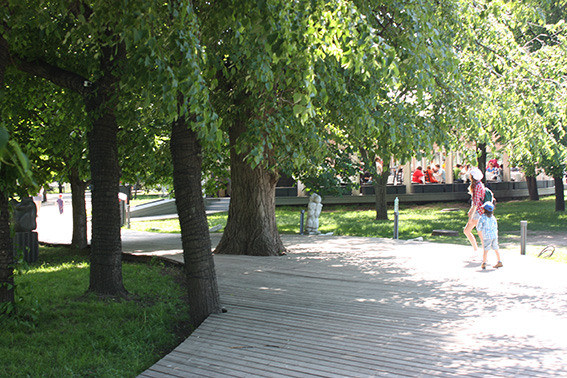A day trip out of St Petersburg to the first and most ancient city in Russia, Velikiy Novgorod was an experience back in time to the mid 9th century and a wonderful encounter with rural Russia.
The monastary of Yuviev on the banks of the Volkhov river, with the St George Cathedral at its centre. A stunning example of medieval architecture with its simple but beautiful proportions and teh ever-present Russian style helmet cupola.
The fresco painting of the interior was breathtaking in its beauty.
The traditional wooden architecture of northern Russia was showcased at an outdoor museum (Vitoslavlitsky) where wooden buildings from the early 19th century have been rescued and restored to protect an architectural heritage that has been mostly destroyed by war and the ravages of time.
From an early windmill
to a traditional fencing style - known as the drunken fence
To the intricately carved all timber church, barn and house buildings that represent a building craft that is both functional and beautiful in its simplicity and form. The following pictures say it all.
The Kremlin (old Russian for fortification) of Novgorod is impressive and a World Heritage site. The bell tower, shown in the first image on this post tells the story of the bells of Novgorod - from ancient times the main bell at the Cathedral of St Sophia (above), Russia's oldest Christian church called its people to meetings. Legend says that after Novgorod was pillaged by Ivan 3rd the bell (a symbol of popular sovereignty) was to be taken to Moscow. On the way the bell was said to shatter and its fragments taken into peasant households throughout the region - which kept alive Novgorod's spirit of liberty. The bell is today revered as a reminder of the traditions that once lay at the heart of the cradle of Russia. Beautiful bronze bells remain the traditional souvenir of Novgorod.


























































